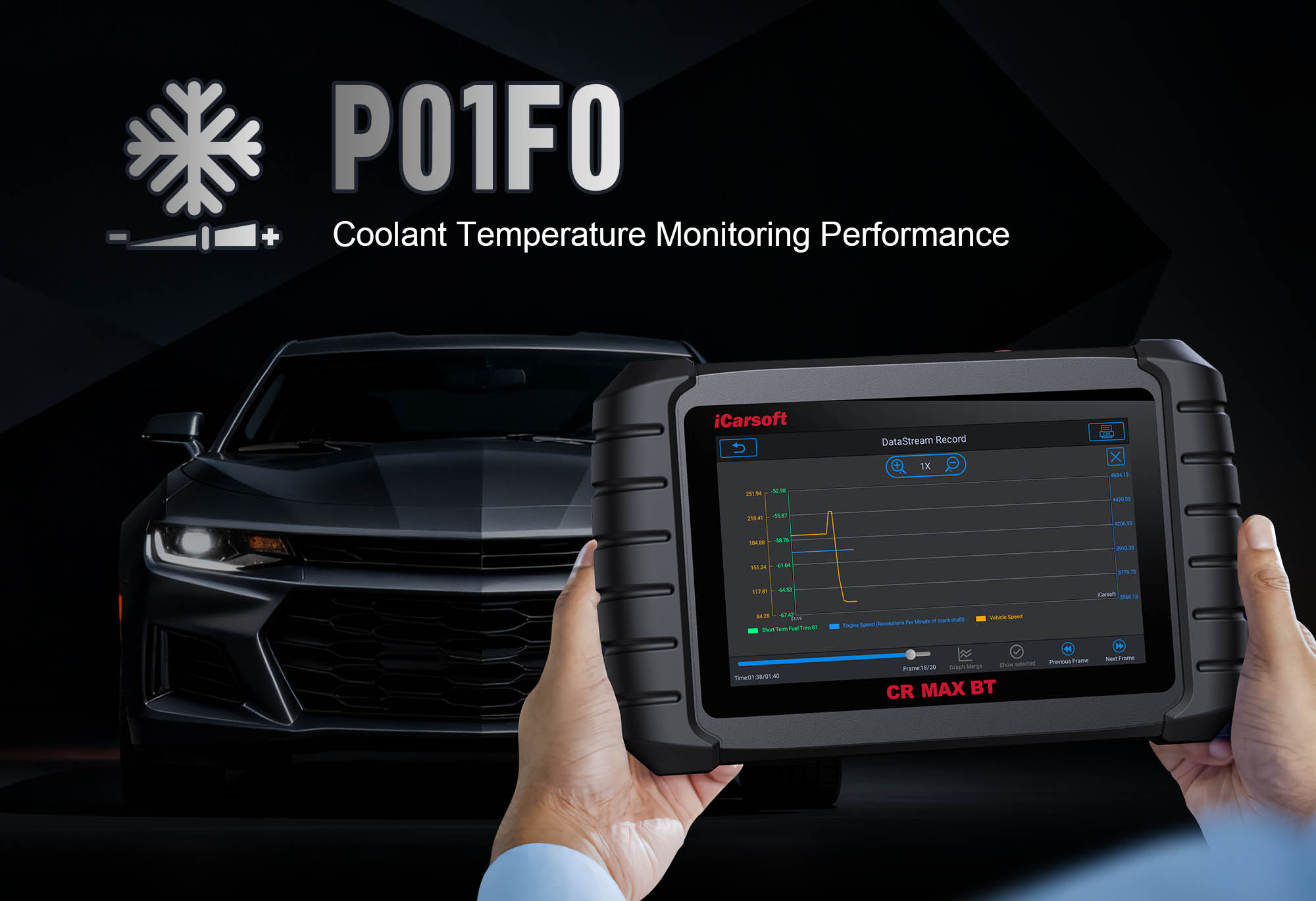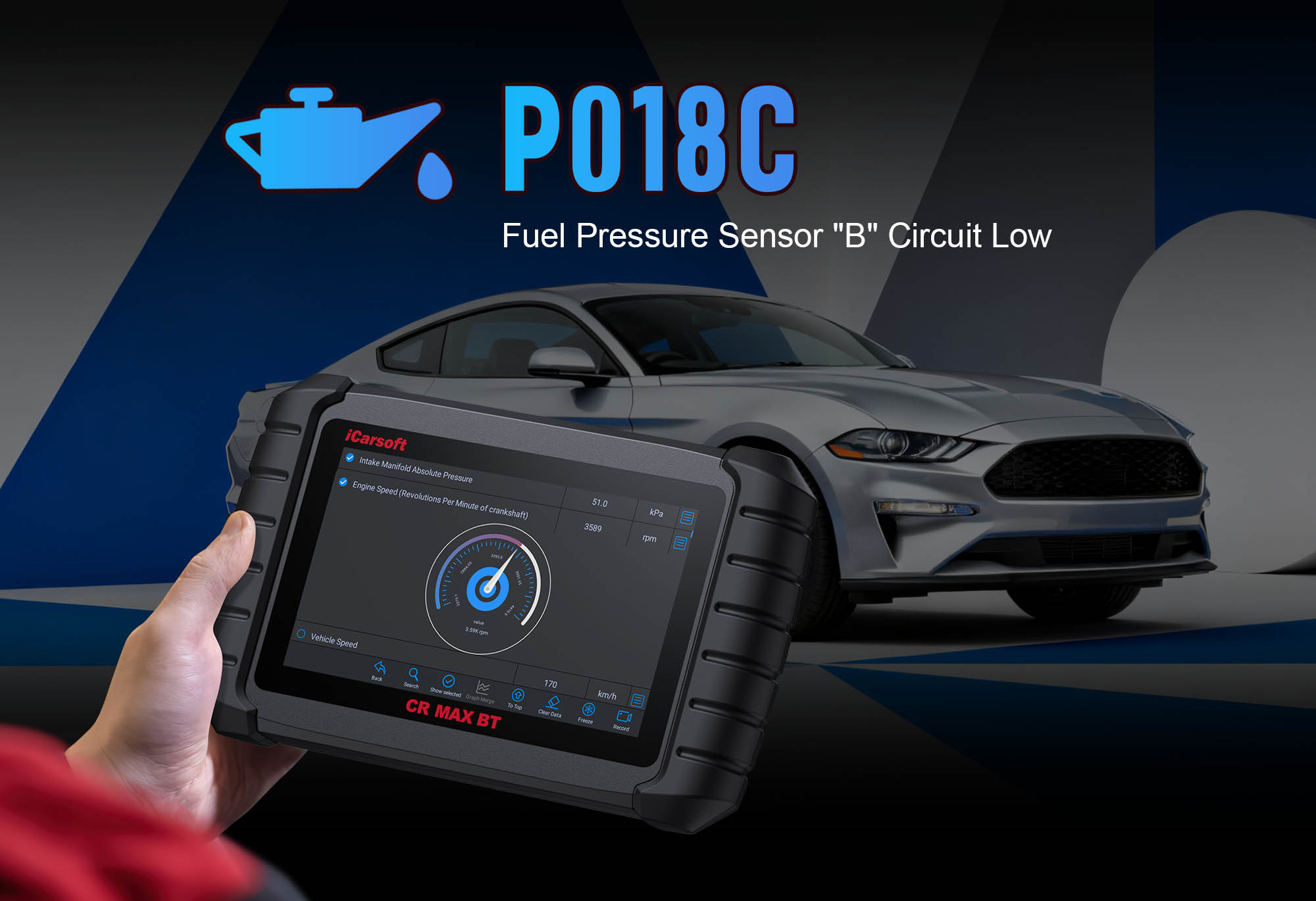Diagnose & Clear P0753 with iCarsoft CR Ultra P
If your vehicle’s transmission shifts erratically, gets stuck in low gear, or triggers a check engine light with no obvious pattern, a diagnostic scan will likely return P0753. This OBD-II code stands for "Shift Solenoid A Electrical Malfunction"—a critical fault indicating the electrical circuit controlling shift solenoid A has failed or is sending inconsistent signals to the Transmission Control Module (TCM). Shift solenoid A regulates hydraulic pressure for specific gear changes (often 1st or 2nd gear), and electrical disruptions here can disable proper shifting, risking transmission damage and unsafe driving.
Basic scanners might only flag a "solenoid electrical issue" but can’t measure voltage spikes, test circuit continuity under load, or isolate wiring faults from solenoid failures. The iCarsoft CR Ultra P, with its OE-level circuit diagnostics, bi-directional controls, and real-time voltage tracking, solves this. Let’s break down how to diagnose and resolve P0753 with precision, using the CR Ultra P’s unique features to restore reliable electrical function to shift solenoid A and ensure smooth gear shifts.
Understanding P0753: Causes & Key Symptoms
Shift solenoid A relies on a stable electrical circuit (12V power, ground, and TCM signals) to open/close its internal valve, directing hydraulic fluid for gear engagement. P0753 specifically targets electrical faults—not mechanical issues—such as short circuits, open circuits, or voltage irregularities that prevent the solenoid from responding to TCM commands. Unlike P0750 (general solenoid malfunction), P0753 narrows the problem to wiring, connectors, or the solenoid’s electrical coil.
Key Symptoms of P0753
-
No Response to Gear Shifts: The transmission ignores requests to shift into 1st/2nd gear, or remains stuck in a single gear.
-
Intermittent Shifting Issues: Works normally in cold weather but fails when warm (due to heat-induced wire expansion/contraction).
-
Harsh or Abrupt Shifts: The TCM forces shifts without proper solenoid timing, causing jolts when accelerating from a stop.
-
Limp Mode Activation: Severe electrical faults trigger limp mode (locks in 2nd gear), limiting speed to 30–40 mph to prevent damage.
-
Burning Smell from Transmission: Electrical shorts can overheat wires or the solenoid, causing insulation to burn.
Common Causes of P0753
|
Cause
|
Description
|
|
Solenoid A Electrical Coil Failure
|
The coil inside the solenoid (which generates magnetic force to open the valve) burns out, creating an open circuit.
|
|
Short Circuit in the Wiring Harness
|
Damaged wires (e.g., from rubbing against metal) cause current to leak, triggering voltage drops.
|
|
Corroded or Loose Connectors
|
Solenoid or TCM connectors develop corrosion or loosen, disrupting signal flow between components.
|
|
Faulty TCM Output Driver
|
The TCM’s internal circuit for sending signals to solenoid A fails, producing erratic voltage.
|
|
Overvoltage from Alternator
|
A malfunctioning alternator sends excess voltage (over 14.5V) to the solenoid, frying its coil.
|
Why iCarsoft CR Ultra P Excels at Diagnosing P0753
Electrical faults are notoriously tricky to trace, but the CR Ultra P’s specialized features target P0753’s root causes:
Real-Time Voltage & Resistance Tracking
Monitors solenoid A circuit voltage (12V ±0.5V) and resistance (10–30 ohms) to catch spikes, drops, or irregularities.
Bi-Directional Solenoid Activation
Tests the solenoid under controlled voltage to isolate electrical issues (e.g., no response = coil failure) from mechanical ones.
Circuit Continuity Testing
Uses built-in multimode to check for shorts, opens, or high resistance in the wiring harness—critical for hidden damage.
Transmission Topology Mapping
Visualizes the entire solenoid A circuit as a color-coded diagram, highlighting corrosion or breaks.
Global Vehicle Coverage
Supports 200+ brands and transmission types, including 2018+ models with DoIP/CAN-FD protocols.
CR Link VCI Compatibility
Seamless connectivity with modern TCMs, ensuring reliable electrical circuit diagnostics.
41 Hot Service Functions
Includes TCM reset, solenoid calibration, and voltage regulation checks—essential for post-repair circuit stability.
Step-by-Step: Diagnose P0753 with iCarsoft CR Ultra P
-
Safety First & Initial Checks
1. Disconnect the negative battery terminal to avoid electrical shorts/shocks.
2. Let transmission cool 2–3 hours to prevent burns from hot components.
3. Locate key components via Component Location > Transmission > Shift Solenoid A Circuit:
- Shift Solenoid A: In valve body (under transmission pan).
- Solenoid Connector: 2–4 pin plug on transmission case.
- Wiring Harness: Runs from solenoid to TCM (under dash/engine bay).
-
Connect Tool & Confirm P0753
Reconnect battery, plug CR Ultra P into OBD-II port, pair with CR Link VCI. Select AutoVIN Identify to retrieve transmission type, solenoid A specs (voltage/resistance), and TCM protocol. Navigate to Transmission > Fault Codes > Read Codes to confirm P0753. Tap Code Details for insights (e.g., "Ford F-150: Voltage: 0V, Expected: 12V"). Note related codes (P0751, P0752) and resolve P0753 first.
-
Test Solenoid A Electrical Function
1. Resistance Test: Disconnect solenoid connector, set tool to "Ohms" and probe pins. Should match specs (15–25 ohms typical); infinite = open coil; 0 = shorted coil.
2. Bi-Directional Voltage Test: Reconnect connector, go to Transmission > Special Functions > Solenoid Control—activate solenoid A. Monitor Live Data > Solenoid A Voltage; should rise to 12V (no voltage = wiring/TCM issue).
3. Continuity Check: Use tool’s "Continuity Test" on wires between solenoid and TCM—beep = continuity; no beep = broken wire.
-
Inspect Wiring, Connectors, & TCM
1. Wiring Harness Inspection: Look for frayed insulation, rodent damage, or metal contact (short circuit causes); repair with heat-shrink tubing.
2. Connector Cleaning: Disconnect solenoid/TCM connectors; check for corrosion. Clean with contact cleaner, straighten bent pins, apply dielectric grease.
3. TCM Signal Validation: Go to Transmission > Live Data > TCM Output to Solenoid A—should switch "On/Off" when shifting; no signal = faulty TCM.
-
Repair or Service to Fix P0753
- Solenoid A Replacement: Remove transmission pan/valve body, replace with OEM-compatible solenoid; run Solenoid Calibration to sync with TCM.
- Wiring Repairs: Replace frayed/shorted wires with 18-gauge automotive wire; secure harness with zip ties.
- Fuse/Relay Check: Use Fuse Check to verify transmission solenoid fuse is intact; replace if blown.
- TCM Reset & Relearn: Run Transmission > Special Functions > TCM Reset; perform Transmission Adaptation Relearn.
-
Clear P0753 & Validate the Repair
1. Clear Code: Navigate to Transmission > Fault Codes > Clear Codes—confirm P0753 deletion.
2. Test Drive: Operate 30–40 miles, testing all gears; check for smooth engagement. Monitor Live Data for steady 12V when solenoid is activated.
3. Post-Repair Validation: Run Transmission > System Check—"No Faults Detected" confirms circuit function.
4. Save Report: Document diagnostics/repairs via History & Report for records.
Preventing P0753 Recurrence
-
Quarterly Electrical Checks: Use the tool to test solenoid resistance and voltage—catch early coil degradation.
-
Connector Maintenance: Inspect and clean solenoid/TCM connectors every 15,000 miles to prevent corrosion.
-
Wiring Inspections: Check the harness during oil changes for wear—secure loose sections with zip ties.
-
Free Updates: Use One-Key Upgrade to add advanced voltage spike detection for 3 years.
Conclusion
P0753’s electrical faults in shift solenoid A disrupt gear shifts and risk costly repairs. The iCarsoft CR Ultra P turns guesswork into precision with real-time voltage tracking, continuity tests, and bi-directional controls, ensuring you fix the root cause—whether a shorted wire, corroded connector, or failed solenoid.
With 200+ brand coverage and 41 service functions, the CR Ultra P is more than a P0753 fix—it’s a long-term investment in transmission reliability. Restore smooth shifts, avoid breakdowns, and drive with confidence—all with one professional-grade tool.





